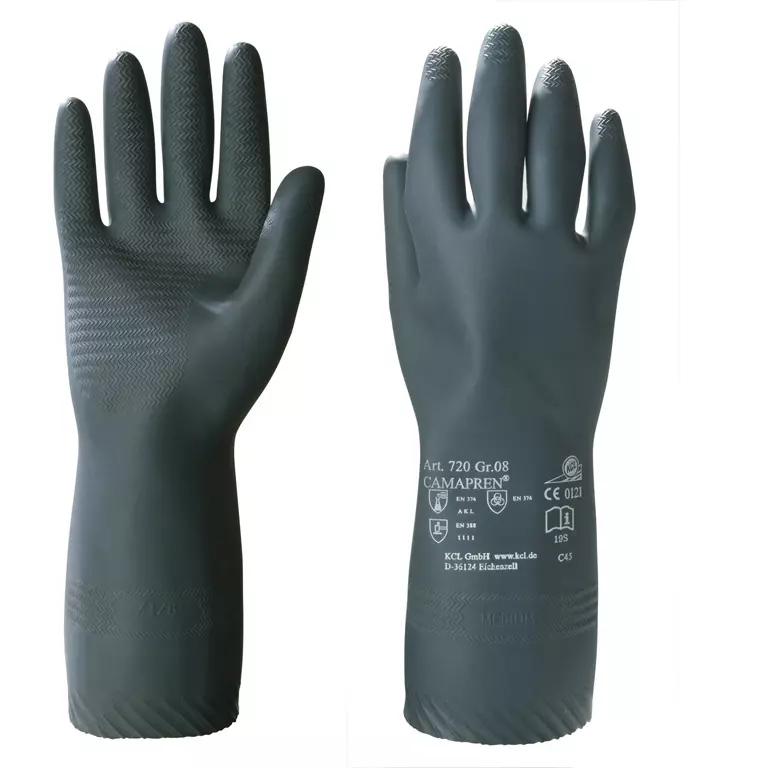
Features You'll Love

Coating Material · Cotton
The material applied to glove surfaces to enhance grip, protection, and durability for specific work conditions and hazards.

Cuff Style · Open
EN 388 · Tear Resistance Level 1, Puncture Resistance Level 1, Abrasion Resistance Level 1
Determines how the glove secures around the wrist, affecting fit, protection from debris, and ease of putting gloves on and taking them off.
Provides basic resistance against snagging or catching on rough surfaces, offering minimal protection from tearing.
Provides basic protection against punctures from blunt objects like splinters, not sharp points like needles.
Provides basic resistance against scraping and surface wear for low-risk tasks.
Honeywell
Camapren 720 Chloroprene/Latex, Gauntlet, Profile Pattern, 29-31cm, Black, 100 pairs
Camapren 720 Chloroprene/Latex, Gauntlet, Profile Pattern, 29-31cm, Black, 100 pairs
5 / 5
493,83 €
Price per 10 packages (100 pairs)
4,94 € / pair
Choose size
Free delivery
Features You'll Love

Coating Material · Cotton
The material applied to glove surfaces to enhance grip, protection, and durability for specific work conditions and hazards.

Cuff Style · Open
EN 388 · Tear Resistance Level 1, Puncture Resistance Level 1, Abrasion Resistance Level 1
Determines how the glove secures around the wrist, affecting fit, protection from debris, and ease of putting gloves on and taking them off.
Provides basic resistance against snagging or catching on rough surfaces, offering minimal protection from tearing.
Provides basic protection against punctures from blunt objects like splinters, not sharp points like needles.
Provides basic resistance against scraping and surface wear for low-risk tasks.
Product description
Camapren are KCL protective gloves made of polychloroprene, a proven raw material with balanced good properties in terms of chemical and mechanical resistance. They are a more durable alternative to natural latex. The anatomical shape enables fatigue-free working. Good flexibility and a pronounced palm profile allow the best tactile feel and a secure grip. A cotton velour finish reduces perspiration. All in all, this is a product series with excellent wearer comfort, high acceptance and good economy for the user.